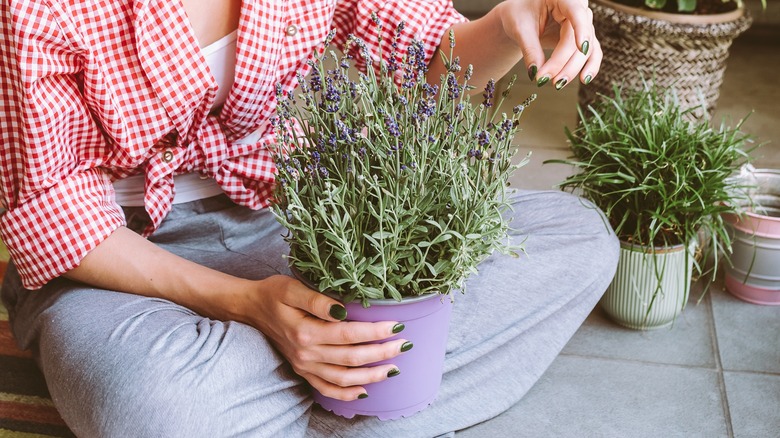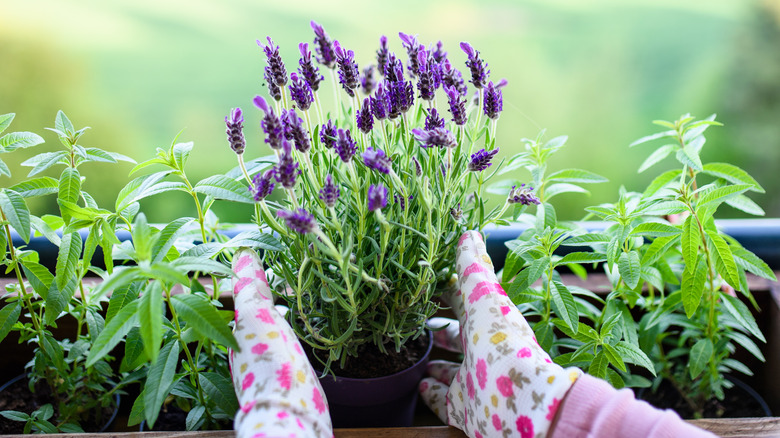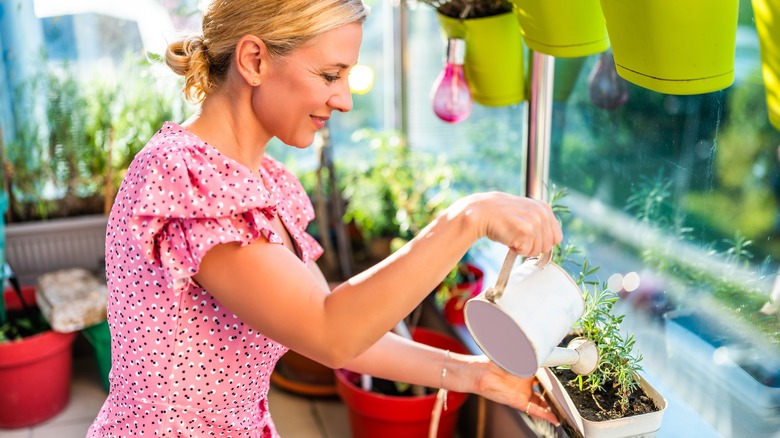Tips For Growing Luscious Lavender Indoors As A Houseplant
Lavender plants are known for their beautiful purple flowers, aromatic scent, culinary uses, and ability to be dried for floral arrangements. So it's no surprise that gardeners of all backgrounds have realized the benefits of bringing lavender into the home as a calming houseplant to help you relax. However, to be successful at growing lavender inside the home, there are a few recommendations to keep in mind. Your indoor lavender should be placed where it can get plenty of direct sunlight, planted in well-draining soil, watered only after the soil is allowed to dry, and pruned regularly.
The first step to successfully growing lavender indoors is to, of course, acquire a lavender plant if you don't already have one. While you can start lavender from a seed, this process can be tedious and slow in the beginning. Instead, consider propagating your lavender from clippings or buying a plant at your local garden center. Lavender typically grows best in drier, warmer climates such as USDA hardiness zones 5 through 10. Having said that, the benefit of keeping lavender inside is that you can grow it regardless of your location or climate.
The best conditions for your indoor lavender
Now that you have your lavender in the home, be sure to place it in an area where it can get at least 5 to 6 hours of direct sunlight. If you don't have this option, consider using LED growing lights for 14 to 16 hours per day. The nice thing about growing lavender in a pot is that you can move it around your space as needed depending on where it will get the best light. Lavender originated in the Mediterranean region, so it's no surprise that your plant will prefer dryer conditions with more sunlight in order to thrive.
Your lavender also has specific soil requirements that will help it thrive. Lavender prefers well-draining soil that is slightly alkaline. Adding oyster shells to the soil can help keep it in an alkaline environment. The planter you choose should also have a good drainage system so your plant isn't sitting in too much water. Adding pea gravel or perlite to the container will aid in draining water from the roots.
Everyday care for your lavender houseplant
Now that you have a good start to the growing conditions for your indoor lavender, consider these extra tips to help your plant really thrive in the home. Because it does best in drier conditions, watering too frequently can cause root rot and your lavender plant leaves to turn brown. Plan to let the soil dry out between waterings so that you avoid too much moisture in the pot. Another tip to keep in mind is how often to prune your lavender. Any old flowers should be removed regularly, and cutting the plant down to a smaller size will ensure new growth. Pruning lavender is essential to the life of the plant, so don't forget this important step to help it thrive.
If you have cats or dogs in the home, keep in mind that when ingested, lavender plants can be toxic to house pets. To be on the safe side, keep these indoor herbs away from any pets that may want a closer look. If you suspect that your pet has consumed your lavender houseplant, bring them to the vet immediately. Besides that caveat, growing lavender indoors can be a great choice that comes with a multitude of benefits.


